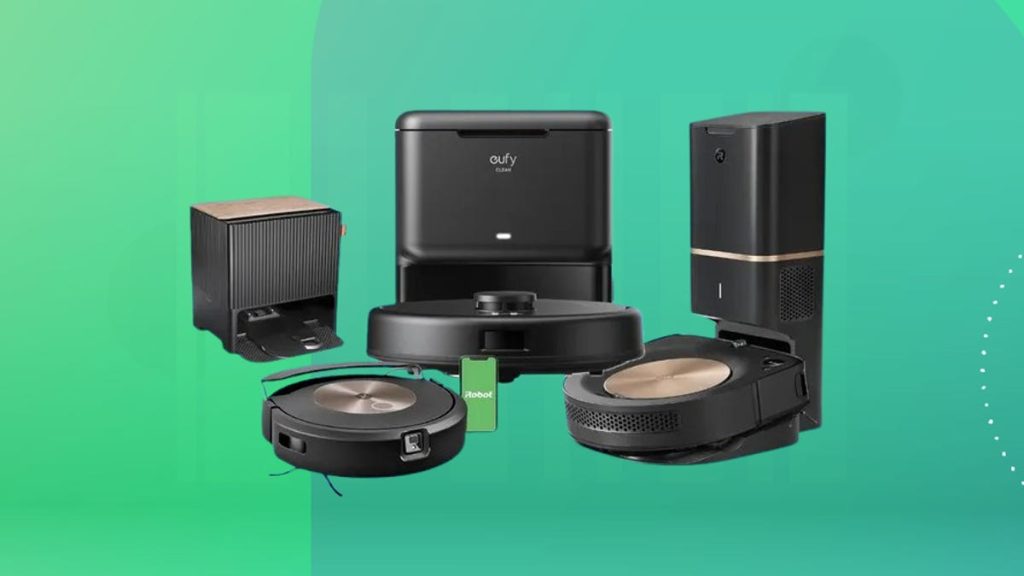Robot Vacuum Evaluation and Testing Methodology
Each robot vacuum undergoes rigorous testing in a dedicated lab environment to assess its cleaning performance and navigation capabilities. The testing process involves controlled pickup tests on various floor types, navigation assessments in a room simulating real-world furniture layouts, pet hair removal evaluations, mopping function analysis, and even simulated pet waste avoidance tests. This comprehensive approach ensures that the recommendations provided are well-informed and cater to diverse consumer needs.
Performance Evaluation: Pickup Power
A key aspect of the evaluation focuses on the robot vacuum’s ability to effectively pick up debris of varying sizes. Using standardized amounts of black rice (representing crumbs) and sand (representing fine particles), the tests measure the pickup percentage on low-pile carpet, midpile carpet, and hardwood floors. The process involves multiple runs to average the results and ensure accuracy. The data collected highlights the strengths and weaknesses of each model on different floor types, allowing for targeted recommendations based on individual consumer preferences. The iRobot Roomba Combo J7 Plus excels on hardwood, while the Dreametech DreameBot D10 Plus offers comparable performance at a lower price point. The Roborock S8 shines on low-pile carpets, demonstrating the variability in performance across models and floor types. Finally, Neato vacuums, particularly the D9 and D8, stand out on midpile carpets, showcasing their specialized design for this specific challenge.
Navigation Skills Assessment
Beyond raw cleaning power, a robot vacuum’s navigation skills are crucial for thorough and efficient cleaning. The ideal robot should seamlessly transition between rooms and autonomously avoid obstacles. To assess navigation proficiency, long-exposure photographs are taken in a darkened test room with glow sticks attached to the vacuums. These light trails visualize the robot’s path, revealing coverage patterns and obstacle avoidance strategies. This visual analysis helps identify robots that offer consistent and comprehensive cleaning coverage while effectively maneuvering around furniture and other common household obstacles. Lidar-based navigation and 3D-mapping cameras, often found in top-performing models like the Roborock S8 Pro Ultra, contribute to superior navigation capabilities.
Object Recognition and Avoidance
Modern robot vacuums often incorporate advanced object recognition technologies to enhance their navigation and cleaning efficiency. Specific tests are conducted to evaluate a robot’s ability to identify and avoid undesirable objects, particularly pet waste. The iRobot Roomba J7 Plus, for example, demonstrates a remarkable ability to navigate around simulated pet droppings, highlighting the effectiveness of its camera-based obstacle avoidance system. Conversely, models like the Samsung JetBot AI Plus struggle with this specific task, demonstrating the variability in object recognition capabilities among different robot vacuum brands and models. This testing highlights the crucial role of advanced sensors and software in achieving truly autonomous and reliable cleaning performance.
Real-World Simulation and Consumer Relevance
The testing environment is meticulously designed to replicate real-world home conditions. The inclusion of mock furniture in the navigation tests allows for accurate assessment of a robot’s ability to maneuver around common household obstacles. Furthermore, the focus on pet hair removal and pet waste avoidance directly addresses common concerns of pet owners, ensuring the recommendations are relevant and practical for a significant segment of consumers. This commitment to real-world simulation enhances the reliability and applicability of the test results to everyday cleaning scenarios.
Comparative Analysis and Performance Ranking
The testing methodology not only evaluates individual robot vacuums but also facilitates a comprehensive comparative analysis. By subjecting all models to the same standardized tests, the team can objectively rank performance and identify the top performers in each category. This comparative data empowers consumers to make informed decisions based on their specific needs and priorities, whether it’s superior cleaning on hardwood floors, exceptional navigation in complex environments, or effective pet hair removal. The data-driven approach ensures transparency and provides valuable insights into the relative strengths and weaknesses of each model.
Transparency and Data-Driven Recommendations
The comprehensive testing methodology employed ensures transparency and fosters trust in the recommendations provided. The detailed description of the testing process, the use of standardized metrics, and the presentation of comparative data allow consumers to understand the basis for the evaluations and make informed decisions. This commitment to transparency empowers consumers to choose the robot vacuum that best aligns with their individual cleaning needs and budgetary constraints.

